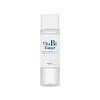What's inside
What's inside
 Key Ingredients
Key Ingredients

 Benefits
Benefits

 Ingredients Side-by-side
Ingredients Side-by-side

Snail Secretion Filtrate 87%
Skin ConditioningButylene Glycol
HumectantGlycerin
HumectantHydroxyethylcellulose
Emulsion StabilisingPEG-40 Hydrogenated Castor Oil
EmulsifyingBeta-Glucan
Skin ConditioningSaccharomyces/Viscum Album Ferment Extract
Skin ConditioningBetaine
HumectantAllantoin
Skin ConditioningPanthenol
Skin ConditioningChlorphenesin
AntimicrobialLactobacillus/Soybean Ferment Extract
Skin ConditioningAnthemis Nobilis Flower Extract
MaskingSaccharomyces/Imperata Cylindrica Root Ferment Extract
EmollientDisodium EDTA
Sodium Hyaluronate
HumectantChamomilla Recutita Flower Oil
MaskingDipropylene Glycol
Humectant1,2-Hexanediol
Skin ConditioningSodium Guaiazulene Sulfonate
Snail Secretion Filtrate 87%, Butylene Glycol, Glycerin, Hydroxyethylcellulose, PEG-40 Hydrogenated Castor Oil, Beta-Glucan, Saccharomyces/Viscum Album Ferment Extract, Betaine, Allantoin, Panthenol, Chlorphenesin, Lactobacillus/Soybean Ferment Extract, Anthemis Nobilis Flower Extract, Saccharomyces/Imperata Cylindrica Root Ferment Extract, Disodium EDTA, Sodium Hyaluronate, Chamomilla Recutita Flower Oil, Dipropylene Glycol, 1,2-Hexanediol, Sodium Guaiazulene Sulfonate
Water
Skin ConditioningButylene Glycol
Humectant1,2-Hexanediol
Skin ConditioningPanthenol
Skin ConditioningBetaine
HumectantGlycerin
HumectantChlorphenesin
AntimicrobialSaccharomyces/Viscum Album Ferment Extract
Skin ConditioningHydrolyzed Collagen
EmollientPalmitoyl Pentapeptide-4
Skin ConditioningSodium Hyaluronate
HumectantLactobacillus/Soybean Ferment Extract
Skin ConditioningSaccharomyces/Imperata Cylindrica Root Ferment Extract
EmollientDisodium EDTA
Acetyl Hexapeptide-8
HumectantCitric Acid
BufferingWater, Butylene Glycol, 1,2-Hexanediol, Panthenol, Betaine, Glycerin, Chlorphenesin, Saccharomyces/Viscum Album Ferment Extract, Hydrolyzed Collagen, Palmitoyl Pentapeptide-4, Sodium Hyaluronate, Lactobacillus/Soybean Ferment Extract, Saccharomyces/Imperata Cylindrica Root Ferment Extract, Disodium EDTA, Acetyl Hexapeptide-8, Citric Acid
 Reviews
Reviews

Ingredients Explained
These ingredients are found in both products.
Ingredients higher up in an ingredient list are typically present in a larger amount.
1,2-Hexanediol is a synthetic liquid and another multi-functional powerhouse.
It is a:
- Humectant, drawing moisture into the skin
- Emollient, helping to soften skin
- Solvent, dispersing and stabilizing formulas
- Preservative booster, enhancing the antimicrobial activity of other preservatives
Betaine is a common humectant (a substance that promotes retention of moisture). It's known to be gentle on the skin and can help balance hydration.
This ingredient is best for improving hydration and soothing irritated skin. Studies also show it helps even out skin tone.
Fun fact: Betaine is naturally created in the skin and body. The kind found within cosmetic products can be either plant-derived or synthetic.
Another name for betaine is trimethylglycine.
Learn more about BetaineButylene Glycol (or BG) is used within cosmetic products for a few different reasons:
Overall, Butylene Glycol is a safe and well-rounded ingredient that works well with other ingredients.
Though this ingredient works well with most skin types, some people with sensitive skin may experience a reaction such as allergic rashes, closed comedones, or itchiness.
Learn more about Butylene GlycolChlorphenesin is a synthetic preservative. It helps protect a product against bacteria in order to extend shelf life. In most cases, Chlorphenesin is paired with other preservatives such as phenoxyethanol and caprylyl glycol.
Chlorphenesin is a biocide. This means it is able to help fight the microorganisms on our skin. It is also able to fight odor-releasing bacteria.
Chlorphenesin is soluble in both water and glycerin.
Studies show Chlorphenesin is easily absorbed by our skin. You should speak with a skincare professional if you have concerns about using Chlorphenesin.
Learn more about ChlorphenesinDisodium EDTA plays a role in making products more stable by aiding other preservatives.
It is a chelating agent, meaning it neutralizes metal ions that may be found in a product.
Disodium EDTA is a salt of edetic acid and is found to be safe in cosmetic ingredients.
Learn more about Disodium EDTAGlycerin is already naturally found in your skin. It helps moisturize and protect your skin.
A study from 2016 found glycerin to be more effective as a humectant than AHAs and hyaluronic acid.
As a humectant, it helps the skin stay hydrated by pulling moisture to your skin. The low molecular weight of glycerin allows it to pull moisture into the deeper layers of your skin.
Hydrated skin improves your skin barrier; Your skin barrier helps protect against irritants and bacteria.
Glycerin has also been found to have antimicrobial and antiviral properties. Due to these properties, glycerin is often used in wound and burn treatments.
In cosmetics, glycerin is usually derived from plants such as soybean or palm. However, it can also be sourced from animals, such as tallow or animal fat.
This ingredient is organic, colorless, odorless, and non-toxic.
Glycerin is the name for this ingredient in American English. British English uses Glycerol/Glycerine.
Learn more about GlycerinThis ingredient is created by fermenting soybean extract with the bacteria, lactobacillus.
Some studies have shown it to have antioxidant properties. One study found this ingredient to have stronger properties than non-fermented soybean extract.
Another study found in increase of isoflavones, amino acids, and peptides in fermented soy milk.
Learn more about Lactobacillus/Soybean Ferment ExtractPanthenol is a common ingredient that helps hydrate and soothe the skin. It is found naturally in our skin and hair.
There are two forms of panthenol: D and L.
D-panthenol is also known as dexpanthenol. Most cosmetics use dexpanthenol or a mixture of D and L-panthenol.
Panthenol is famous due to its ability to go deeper into the skin's layers. Using this ingredient has numerous pros (and no cons):
Like hyaluronic acid, panthenol is a humectant. Humectants are able to bind and hold large amounts of water to keep skin hydrated.
This ingredient works well for wound healing. It works by increasing tissue in the wound and helps close open wounds.
Once oxidized, panthenol converts to pantothenic acid. Panthothenic acid is found in all living cells.
This ingredient is also referred to as pro-vitamin B5.
Learn more about PanthenolWe don't have a description for Saccharomyces/Imperata Cylindrica Root Ferment Extract yet.
We don't have a description for Saccharomyces/Viscum Album Ferment Extract yet.
Sodium Hyaluronate is hyaluronic acid's salt form. It is commonly derived from the sodium salt of hyaluronic acid.
Like hyaluronic acid, it is great at holding water and acts as a humectant. This makes it a great skin hydrating ingredient.
Sodium Hyaluronate is naturally occurring in our bodies and is mostly found in eye fluid and joints.
These are some other common types of Hyaluronic Acid:
Learn more about Sodium Hyaluronate